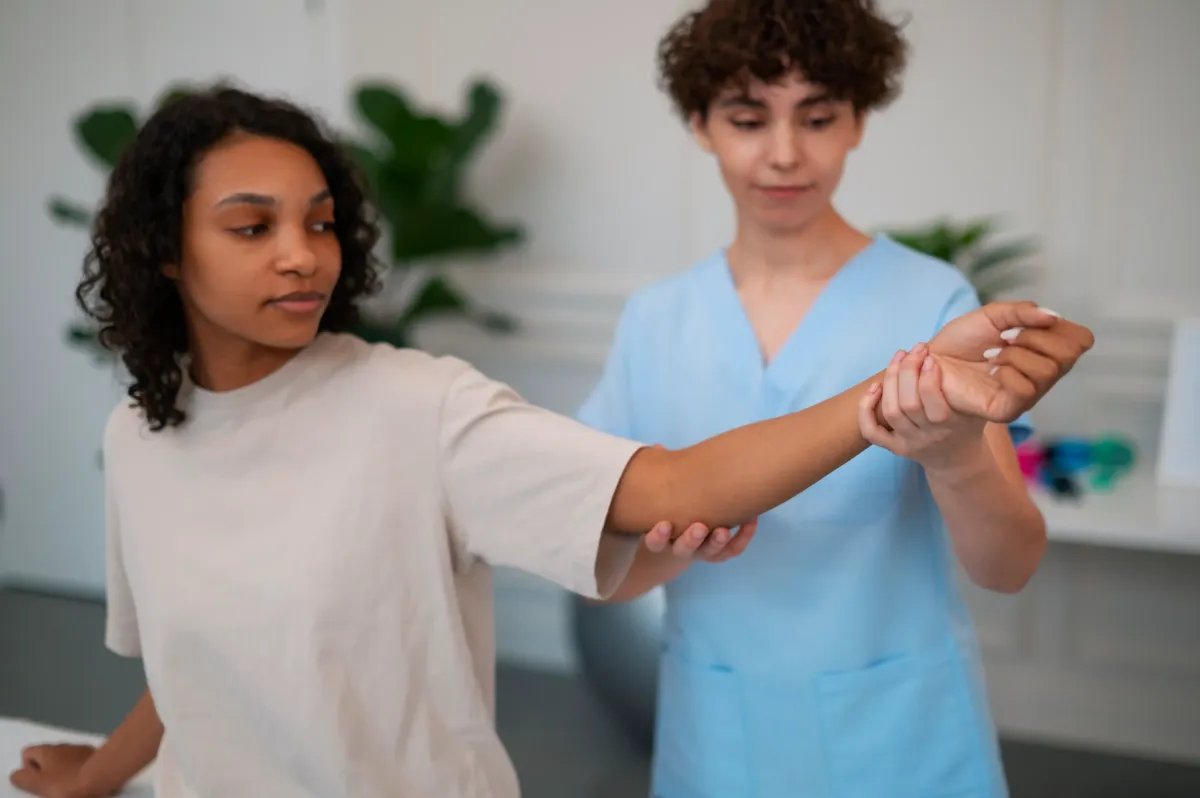Carpal Tunnel Physical Therapy in New Jersey
Clifton Physical Therapy

What is Carpal Tunnel Syndrome?
Carpal tunnel syndrome (CTS) arises when the space in the wrist known as the carpal tunnel becomes crowded and compresses the median nerve. This leads to symptoms such as tingling, numbness, burning or dull ache in the hand, fingers, or forearm. Some patients may feel their grip weakening or struggle to perform fine motions like buttoning a shirt.
The prevalence of CTS makes it a common concern among New Jersey’s workforce and residents—especially those whose jobs involve repetitive wrist motion, forceful gripping or frequent vibration exposure.
Who is at Risk and How to Recognize Early Signs
Understanding the people most likely to develop CTS helps ensure timely care. Risk factors include:
Carrying excess weight or being overweight, which increases pressures on the wrist tissues.
Pregnancy, which may bring fluid shifts and increased swelling in the wrist area.
Jobs or hobbies that repeatedly bend the wrist, grip hard, or use vibrating tools (common in many New Jersey trades).
Medical conditions such as arthritis or diabetes, which affect nerve health.
A family history of CTS or a prior wrist injury.
Household or recreational activities that load the wrist (e.g., intensive gaming, frequent smartphone use, DIY tasks).
Signs to watch for include:
Numbness or tingling in the thumb, index, middle, or ring finger—especially at night or when waking up.
A sensation of “fingers falling asleep” or needing to shake them out.
Pain or aching in the hand, wrist, or forearm that is not clearly from a skin injury.
A weaker thumb or difficulty holding objects like mugs, pens, or keys.
What Carpal Tunnel Syndrome Feels Like
Carpal tunnel syndrome often makes your hands, fingers, and wrists feel uncomfortable or “off.” You might notice tingling or a pins-and-needles sensation, or feel like your hands have gone numb, prompting you to shake them out to get relief.
The discomfort usually comes from deep inside the wrist or hand rather than on the surface, and can range from a sharp, burning pain to a dull, constant ache. Many people also notice that their grip feels weaker—holding a coffee mug, pen, or other objects may suddenly feel awkward, even when focusing carefully.
Fine motor tasks like buttoning a shirt, turning a key, or picking up small items may feel more difficult or clumsy than usual. These everyday frustrations are often the first signs that it’s time to address carpal tunnel symptoms.
Carpal Tunnel Exercises to Improve Hand and Wrist Function
Physical therapy for carpal tunnel focuses on gently stretching and strengthening the wrist, hand, and fingers. These exercises can help relieve pressure on the median nerve and improve grip and mobility. Most can be done at home, at your desk, or even while watching TV.
Start with simple wrist movements. Rotate your wrists in circles and move them up, down, left, and right to loosen stiffness. Next, spread your fingers wide, hold for a moment, and relax, repeating this several times. Gently stretch your thumb by pulling it back with your other hand until you feel a light stretch.
The prayer stretch can reduce wrist tension: press your palms together under your chin and slowly lower your hands toward your waist, keeping palms pressed, until you feel a comfortable stretch. Hold for about 30 seconds and repeat a few times. Flexor and extensor stretches target the front and back of the wrist. Hold your arm out, palm up or down, and use your other hand to gently bend your wrist for 20–30 seconds, repeating for both wrists.
Tendon gliding exercises help the nerve slide freely. Straighten your fingers, then curl them slowly into a fist, bending each joint one at a time. Another variation starts with fingers straight, bends at the first knuckles to make an “L” shape, then continues curling toward the palm. These can be repeated multiple times a day.
For quick relief, especially at night, gently shake your hands or open your fists fully and point your fingers toward the ceiling like signaling “stop.” Thumb touches—touching each fingertip to your thumb—help maintain fine motor control.
You can also perform light wrist stretches over the edge of a table, bending the hand up and down slowly, or use wrist resistance exercises by pushing your hand against the opposite hand for mild resistance. Wrist curls with a small weight or soft grip exercises with a ball or rolled-up socks strengthen the muscles in your forearm and hand. Repeat these in short sets throughout the day to improve strength and coordination gradually.
Community insights on Carpal Tunnel Recovery
"When I had it, splinting did help, but I also stretched, did manual therapy, and slowly increased my activity with my wrist — assuming it is really carpal tunnel.” — From a Reddit discussion on carpal tunnel therapy
“I recovered entirely from it in both hands through physiotherapy. It largely amounted to a bunch of stretches that worked and ‘flossed’ the nerve. It went away entirely for several months. I’m experiencing a small relapse, but I hope more stretching will resolve it again.” — From a Reddit post about healing carpal tunnel without surgery
“I had no surgeries or injectables — just PT, stretches, and light weights done religiously three times a day.” — From a Reddit discussion on non-surgical carpal tunnel recovery
“If this is your first CT release or any wrist surgery, I highly recommend hand PT. It really helps.” — From a Reddit thread on post-surgery physical therapy
“See a physical therapist and do the physical therapy after your operation!” — From a Reddit post encouraging post-op PT
“My doctor asked if I would like PT and I said yes. It was a tremendous help. I bought hand exercise tools for home too. Vitamin E cream massaging also helps.” — From a Reddit discussion about recovery after wrist surgery
Call us at (973)-241-1338 to book your appointment today.
What others are saying
"I recently had ankle surgery and Clifton PT has been nothing short of amazing! My goal was to get back to playing soccer as quick as possible before the college season started and so far I'm right on track. Izzy, Bianca, Tiff, and John have gone above and beyond to make sure I'm back to 100%. Couldn't be more grateful to be treated by the best team ever!." - Nat Rufino

All the therapists at Clifton Physical Therapy are awesome, but I spend most of my time with Izzy and Bianca—and they’ve been amazing. They’re enthusiastic, knowledgeable, and always take the time to explain what I’m doing and what my issues are. Their positive energy and clear communication make a big difference in my recovery." - Bryan Tompkins

"Going Clifton physical therapy was one of the best thing that came out of my back pain! Every single staff member is amazing and cares for your recovery! I have been with them for the past couple of months and now continuing their workout program! I can’t recommend them enough! Tiffany, Izzy, Bianca and everyone else I have worked with there! Can’t rave about them enough!!." - Monica Mehta

"Clifton Physical Therapy has been a great place for me to heal my meniscus tear. The staff is very knowledgeable and friendly, and has been extremely helpful in guiding me through my recovery. I highly recommend their services.." - Kelly Bevando

Clifton Physical Therapy
✆ Phone (appointments): (973)-241-1338
Address: 1059 Bloomfield Ave, Clifton, NJ 07012
